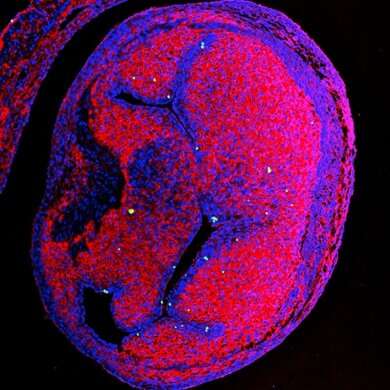Biologists find nanoplastics in developing chicken heart
- Get link
- X
- Other Apps

Nanoplastics can accumulate in developing hearts, according to a study published in Environment International by biologist Meiru Wang from Leiden University. Her research on chicken embryos sheds new light on how these tiny plastic particles pose a threat to our health.
Disposable cups, plastic bags and packaging material: Plastics exposed to the elements become brittle over time, and start shedding small particles from their surface into nature. These particles can be as tiny as only a few nanometers in size.
You can find these nanoplastics everywhere now: in the sea, in the soil, in the food chain.… «And in our blood,» says Wang. «Nanoplastics have even been found in human placentas.»
This prompted Wang to think: What happens when those nanoplastics end up in the blood of the embryo?
«During an earlier study, we discovered that a high concentration of nanoplastics can cause malformations in the heart, eyes, and nervous systems of chicken embryos. But for a more complete understanding of the toxicity of nanoplastics, we first need more information about how they spread from the blood throughout the rest of the body.»
That knowledge will also be informative in nanomedicine, where scientists aim to use nanoplastics (and other nanoparticles) as vehicles for drug-delivery.
Wang and her colleagues administered polystyrene nanoparticles directly into the bloodstream of chicken embryos. Wang says, «Chicken embryos are a widely used model for research on growth and development. In mammals, it’s much more challenging to administer substances or take measurements because their embryos develop inside the mother’s womb.»
Because nanoparticles are so small, it’s impossible to see them using conventional microscopes. Therefore, Wang and her colleagues tagged the nanoparticles with either fluorescence or europium, a rare metal that is not naturally present in the human body.
Wang states, «We found that the nanoplastics can cross blood vessel walls, and that they accumulated to relatively high levels in the heart, liver and kidneys. Some nanoplastics were excreted by the kidneys.»
Interestingly, the researchers also found nanoplastics in the avascular heart cushions: a type of heart tissue without blood vessels. «We believe the nanoplastics might enter the heart through the fenestrate. These are small openings within the developing heart tissue that play a role in the formation and remodeling of the heart’s structure during development,» says Wang. These fenestrations are temporary structures that typically close as the heart matures.
«Now we know how these nanoplastics spread, we can start investigating the health risks,» says Wang. And the outlook isn’t necessarily good. «There is already research linking nanoparticles to a higher risk of heart attacks and strokes. Especially during the developmental stage, nanoparticles could potentially be quite dangerous.
«Because of our results, we now understand that we shouldn’t administer nanomedicines to pregnant women indiscriminately, as there is a risk that nanoparticles could reach and affect the developing organs of their babies.»
More information:
Meiru Wang et al, The biodistribution of polystyrene nanoparticles administered intravenously in the chicken embryo, Environment International (2024). DOI: 10.1016/j.envint.2024.108723
Provided by
Leiden University
Citation:
Biologists find nanoplastics in developing chicken heart (2024, May 28)
retrieved 16 June 2024
from
This document is subject to copyright. Apart from any fair dealing for the purpose of private study or research, no
part may be reproduced without the written permission. The content is provided for information purposes only.
- Get link
- X
- Other Apps
Comments
Post a Comment